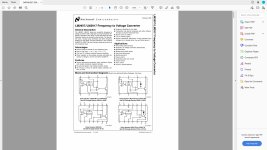daver2
10k Member
Excellent!
So, you now need to apply the temporary link to the same point on the other disk drive's motor speed controller PCB (left hand side drive, drive #1).
Do you think you can do that on your own?
The two tests that you will need to perform before powering up are:
1. Measure the resistance between UB2 pin 7 and 14 again - you should read approximately 115 Ohms.
2. Follow the ORANGE and BLACK leads back from the motor speed controller PCB that you have modified and test at the disk drive connector for 0 Ohms between the two points where the ORANGE and BLACK cables are.
The resistor is now R1 instead of R4 - but I don't think you need to perform these tests again (unless you really want to of course).
Let me know when you are done and you are happy BEFORE we apply power.
Dave
So, you now need to apply the temporary link to the same point on the other disk drive's motor speed controller PCB (left hand side drive, drive #1).
Do you think you can do that on your own?
The two tests that you will need to perform before powering up are:
1. Measure the resistance between UB2 pin 7 and 14 again - you should read approximately 115 Ohms.
2. Follow the ORANGE and BLACK leads back from the motor speed controller PCB that you have modified and test at the disk drive connector for 0 Ohms between the two points where the ORANGE and BLACK cables are.
The resistor is now R1 instead of R4 - but I don't think you need to perform these tests again (unless you really want to of course).
Let me know when you are done and you are happy BEFORE we apply power.
Dave



